According to the 2023 Gartner Multichannel Marketing Survey, email marketing is still the most effective way to engage prospects and generate leads. However, unlocking this potential requires solid strategies. In this article, we’ll share how you can take your email marketing for insurance agents to the next level.
Table of Contents
Benefits of Email Marketing for Insurance Agents
While other customer acquisition methods grab all the headlines, email marketing quietly does its job, getting results for insurance agents year after year.
Here are five of the most significant benefits of email marketing for insurance agents.
- Data sovereignty: While social media marketing helps you reach a wide audience, you’re only an account shutdown or algorithm change away from losing access to that customer data. With email marketing, you own your customer list and are free to use it optimally.
- The personal touch: Email allows you to cultivate meaningful relationships with your clients on an individual level. This approach is vital for building trust in the insurance sector.
- ROI: Email offers an incredible return on investment for relatively little effort.
- Surgical targeting: You can use an information-rich email list to deliver highly targeted and relevant content to your prospects.
- Metrics that matter: Modern email marketing software helps you track a wide range of metrics that can help you optimize your campaigns and refine your strategies.
Now that the benefits of email marketing for insurance agents are clear, it’s time to explore the strategies needed for success.
1. Build a Targeted Email List
A targeted email list is the essential first step of effective email marketing for insurance agents. First-party data allows you to personalize and segment your emails, which leads to higher open and engagement rates.
Insurance marketing teams need all the help they can get because email marketing in the insurance industry in Q1 2024 had an open rate of just above 31%, which is significantly lower than the all-industries average of approximately 36%.
Building a quality email list requires a few core steps:
- Create lead magnets like whitepapers, ebooks, and webinars to capture leads.
- Use opt-in forms on your website with compelling copy.
- Leverage in-person and online networking and referrals to collect prospect data.
- Purchase quality lists that are tailor-made for insurance companies from reputable providers like Neilson Marketing.
2. Craft Compelling Email Content
Insurance is highly technical and challenging for some consumers to understand. Simple, compelling copy with a human edge is vital for connecting with prospects. Get your content right, and you can:
- Build trust
- Drive engagement
- Increase click-through rates
Some of the content that will resonate with your target audience includes:
Educational content
Educational content like tips and FAQ lists help break complex information into easily digested bites. Keep the tone simple and punchy, and focus on answering the questions that are on your target audience’s mind.
Testimonials
Social proof is a powerful driver of trust and authority. Share testimonials and stories of customer success to foster positive feelings and show how your insurance company has helped people through difficult times.
Promotional Offers and Discounts
Promotional offers and discounts help your emails cut through the noise by offering recipients something valuable. Create a sense of urgency by providing genuinely good deals with limited-time offers to entice potential clients.
3. Personalize and Segment Your Emails
Personalization and segmentation are proven ways to provide your users with relevant content. Indeed, according to McKinsey research, 71% of customers expect personalized communication, and three-fourths say they get frustrated when they don’t.
Similarly, email list segmentation — which involves breaking your list into cohorts like demographics, interests, location, etc. — is a powerful tool for driving email marketing return on investment (ROI). HubSpot reports that “segmented emails drive 30% more opens and 50% more click-throughs than unsegmented ones”, which is a compelling reason to embrace this approach.
Here are some strategies that help you benefit from personalization and segmentations.
- Use recipients’ names, acknowledge their birthdays with special offers, and tailor content based on their past engagement or interests.
- Segment users based on demographics but without making wholesale assumptions.
- Use your customer relationship management (CRM) and first-party data to send highly relevant content that relates to past users’ actions.
- Segment users based on the customer journey lifecycle to anticipate your prospects’ and current customers’ needs.
4. Implement Effective Email Automation
Many insurance agents already use automation for data entry, policy management, claims processing, and email marketing. Automation’s big benefit is that it helps you save time and effort by scheduling emails to go out at the optimal time.
With the right approach, email automation can help you nurture leads and even retain your existing customers through helpful and timely content. What’s more, as highlighted in the previous section, automation allows you to personalize and segment your email list without excessive manual effort.
Here’s how you can use email automation to improve business outcomes in the insurance sector.
- Automate customer onboarding to send welcome emails, link to helpful pages like your FAQ or knowledge base, and share content that helps them realize the full value of your offer.
- Send out drip campaigns to slowly nurture leads with helpful information like how-to guides, insurance comparisons, and industry insights. The idea here is that you slowly foster trust and credibility through valuable communications.
- Retention becomes the new acquisition in economic downturns. Email automation helps you hold on to customers by reminding them when their policies are about to expire and ensuring they remember why your solutions offer great value, features, and more.
- Email automation also helps you remarket to previous customers or prospects who have started but not completed a quote.
5. Monitor and Analyze Email Performance
If you want to build successful email marketing campaigns, you need to fine-tune them based on results. Thankfully, there are many ways to monitor and analyze email performance to ensure your campaigns hit their mark.
Comprehensive campaign monitoring has lots of benefits for marketing teams in the insurance sector. For starters, reports provide insights into what type of content or subjects resonate with your target audience. Armed with this data, you can lean into the content that drives conversions, leads, or open rates.
Indeed, metrics like open, click-through, and unsubscribe rates offer important clues about both your content and sending cadence. Pouring over this data helps you evaluate the effectiveness of subject lines, topics, and other email factors. Again, paying attention here will help you drive better and more relevant content to the right demographics.
You can also use this data to track the ROI of email marketing campaigns. Sales and lead attribution are far less complicated with email marketing than other types of campaigns. The best monitoring tools will help you break down the causal factors behind campaign performance so you can improve and optimize until you get the results you need.
Here are the key email metrics you should follow:
- Open rates, click-through rates, and conversion rates (i.e., sales or leads) help you objectively measure if your email campaigns are working as intended.
- Bounce rates are a great way to determine the quality of your list, while unsubscribe rates can tell you a lot about your content and sending frequency.
- The best email monitoring tools allow you to experiment with content like A/B tests, different segments, and the timing of emails. Even minor changes can have major results.
Leverage Email Marketing for Insurance Agents
In 2024, email marketing for insurance agents is still the most cost-effective advertising channel. However, achieving a strong ROI requires a few key steps. Building a solid list and crafting superb content is a must if you want to connect with your audience. When paired with personalization, segmentation, and email automation, you can deliver tailored and relevant emails that convert.
Of course, success requires continuous optimization and adaptation. Monitoring your marketing campaigns gives you access to a treasure trove of data about your audience and campaigns. Use it wisely so you can get the results you need to grow and scale your business.
If your insurance agency is struggling to get the sales and conversions it needs, book a call with Neilson Marketing today so we can discuss the strategy that will work for your firm.
FAQ
Q: Is email marketing for insurance companies still effective in 2024?
A: Yes. In fact, it’s still the most effective type of marketing.
Q: What is the ROI for email marketing?
A: For every $1 you spend on email marketing, you can get $42 worth of business.
Q: What are the primary goals of email marketing for insurance agents?
A: Email marketing can generate and nurture leads, boost customer retention, and even cross-sell and upsell related policies.
Q: Why is first-party data so crucial for insurance industry email marketing?
A: Data privacy concerns and limitations on cookies have hurt the effectiveness of pay-per-click (PPC) ads. Email marketing allows customers to opt-in to communications, allowing marketing teams to send precisely calibrated messaging.
Q: What subject lines work best in email marketing for insurance agents?
A: Short, punchy subject lines that promise value are the gold standard.

